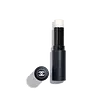What's inside
What's inside
 Key Ingredients
Key Ingredients

 Benefits
Benefits

 Concerns
Concerns

 Ingredients Side-by-side
Ingredients Side-by-side

Dicaprylyl Carbonate
EmollientDiisostearyl Malate
EmollientIsononyl Isononanoate
EmollientSynthetic Wax
AbrasivePolymethylsilsesquioxane
Jojoba Esters
EmollientEthylene/Propylene Copolymer
AbrasiveEthylhexyl Palmitate
EmollientAluminum Starch Octenylsuccinate
AbsorbentHydrogenated Castor Oil
EmollientButyrospermum Parkii Butter
Skin ConditioningStearalkonium Hectorite
Gel FormingTribehenin
EmollientTocopheryl Acetate
AntioxidantPropylene Carbonate
SolventSorbitan Isostearate
EmulsifyingDimethicone
EmollientParfum
MaskingTocopherol
AntioxidantPalmitoyl Tripeptide-1
Skin ConditioningBHT
AntioxidantCitric Acid
BufferingDicaprylyl Carbonate, Diisostearyl Malate, Isononyl Isononanoate, Synthetic Wax, Polymethylsilsesquioxane, Jojoba Esters, Ethylene/Propylene Copolymer, Ethylhexyl Palmitate, Aluminum Starch Octenylsuccinate, Hydrogenated Castor Oil, Butyrospermum Parkii Butter, Stearalkonium Hectorite, Tribehenin, Tocopheryl Acetate, Propylene Carbonate, Sorbitan Isostearate, Dimethicone, Parfum, Tocopherol, Palmitoyl Tripeptide-1, BHT, Citric Acid
Pentaerythrityl Tetraisostearate
EmollientIsostearyl Isostearate
EmollientDiisostearyl Malate
EmollientCera Alba
EmollientCera Microcristallina
Emulsion StabilisingCandelilla Cera
EmollientNylon-12
Raspberry Seed Oil/Tocopheryl Succinate Aminopropanediol Esters
Skin ConditioningDipalmitoyl Hydroxyproline
Skin ConditioningCaprylic/Capric Triglyceride
MaskingParfum
MaskingCrambe Abyssinica Seed Oil
Skin ConditioningLecithin
EmollientMorus Alba Bark Extract
Skin ConditioningTocopherol
AntioxidantAscorbyl Palmitate
AntioxidantPhytosterols
Skin ConditioningOleyl Alcohol
EmollientBenzyl Alcohol
PerfumingCitric Acid
BufferingCI 77891
Cosmetic ColorantPentaerythrityl Tetraisostearate, Isostearyl Isostearate, Diisostearyl Malate, Cera Alba, Cera Microcristallina, Candelilla Cera, Nylon-12, Raspberry Seed Oil/Tocopheryl Succinate Aminopropanediol Esters, Dipalmitoyl Hydroxyproline, Caprylic/Capric Triglyceride, Parfum, Crambe Abyssinica Seed Oil, Lecithin, Morus Alba Bark Extract, Tocopherol, Ascorbyl Palmitate, Phytosterols, Oleyl Alcohol, Benzyl Alcohol, Citric Acid, CI 77891
Ingredients Explained
These ingredients are found in both products.
Ingredients higher up in an ingredient list are typically present in a larger amount.
Citric Acid is an alpha hydroxy acid (AHA) naturally found in citrus fruits like oranges, lemons, and limes.
Like other AHAs, citric acid can exfoliate skin by breaking down the bonds that hold dead skin cells together. This helps reveal smoother and brighter skin underneath.
However, this exfoliating effect only happens at high concentrations (20%) which can be hard to find in cosmetic products.
Due to this, citric acid is usually included in small amounts as a pH adjuster. This helps keep products slightly more acidic and compatible with skin's natural pH.
In skincare formulas, citric acid can:
While it can provide some skin benefits, research shows lactic acid and glycolic acid are generally more effective and less irritating exfoliants.
Most citric acid used in skincare today is made by fermenting sugars (usually from molasses). This synthetic version is identical to the natural citrus form but easier to stabilize and use in formulations.
Read more about some other popular AHA's here:
Learn more about Citric AcidDiisostearyl Malate is an emollient and most often used in lip products. It comes from isostearyl alcohol, a fatty acid, and malic acid, an AHA.
As an emollient, Diisostearyl Malate helps create a thin film on your skin to trap moisture in. This helps keep your skin soft and smooth.
Parfum is a catch-all term for an ingredient or more that is used to give a scent to products.
Also called "fragrance", this ingredient can be a blend of hundreds of chemicals or plant oils. This means every product with "fragrance" or "parfum" in the ingredients list is a different mixture.
For instance, Habanolide is a proprietary trade name for a specific aroma chemical. When used as a fragrance ingredient in cosmetics, most aroma chemicals fall under the broad labeling category of “FRAGRANCE” or “PARFUM” according to EU and US regulations.
The term 'parfum' or 'fragrance' is not regulated in many countries. In many cases, it is up to the brand to define this term.
For instance, many brands choose to label themselves as "fragrance-free" because they are not using synthetic fragrances. However, their products may still contain ingredients such as essential oils that are considered a fragrance by INCI standards.
One example is Calendula flower extract. Calendula is an essential oil that still imparts a scent or 'fragrance'.
Depending on the blend, the ingredients in the mixture can cause allergies and sensitivities on the skin. Some ingredients that are known EU allergens include linalool and citronellol.
Parfum can also be used to mask or cover an unpleasant scent.
The bottom line is: not all fragrances/parfum/ingredients are created equally. If you are worried about fragrances, we recommend taking a closer look at an ingredient. And of course, we always recommend speaking with a professional.
Learn more about ParfumTocopherol (also known as Vitamin E) is a common antioxidant used to help protect the skin from free-radicals and strengthen the skin barrier. It's also fat soluble - this means our skin is great at absorbing it.
Vitamin E also helps keep your natural skin lipids healthy. Your lipid skin barrier naturally consists of lipids, ceramides, and fatty acids. Vitamin E offers extra protection for your skin’s lipid barrier, keeping your skin healthy and nourished.
Another benefit is a bit of UV protection. Vitamin E helps reduce the damage caused by UVB rays. (It should not replace your sunscreen). Combining it with Vitamin C can decrease sunburned cells and hyperpigmentation after UV exposure.
You might have noticed Vitamin E + C often paired together. This is because it is great at stabilizing Vitamin C. Using the two together helps increase the effectiveness of both ingredients.
There are often claims that Vitamin E can reduce/prevent scarring, but these claims haven't been confirmed by scientific research.
Learn more about Tocopherol